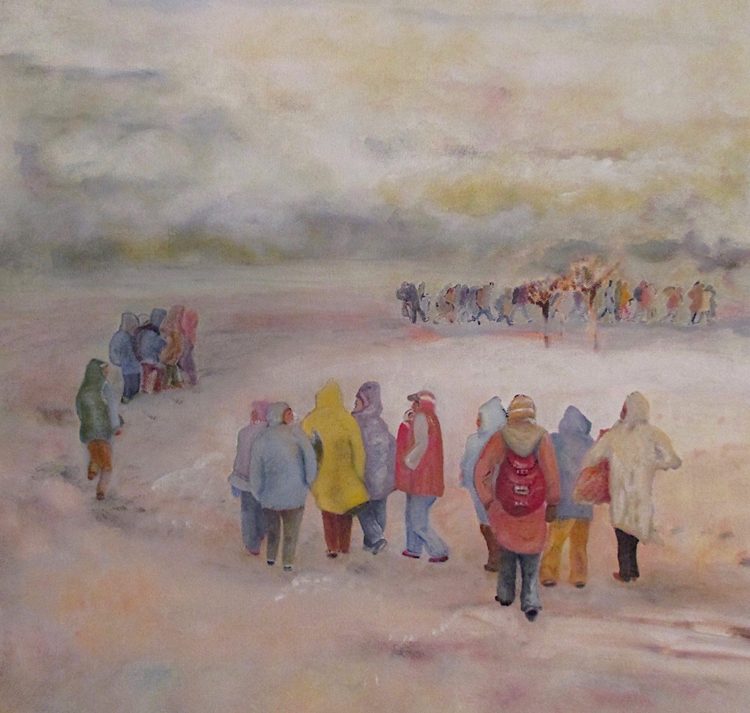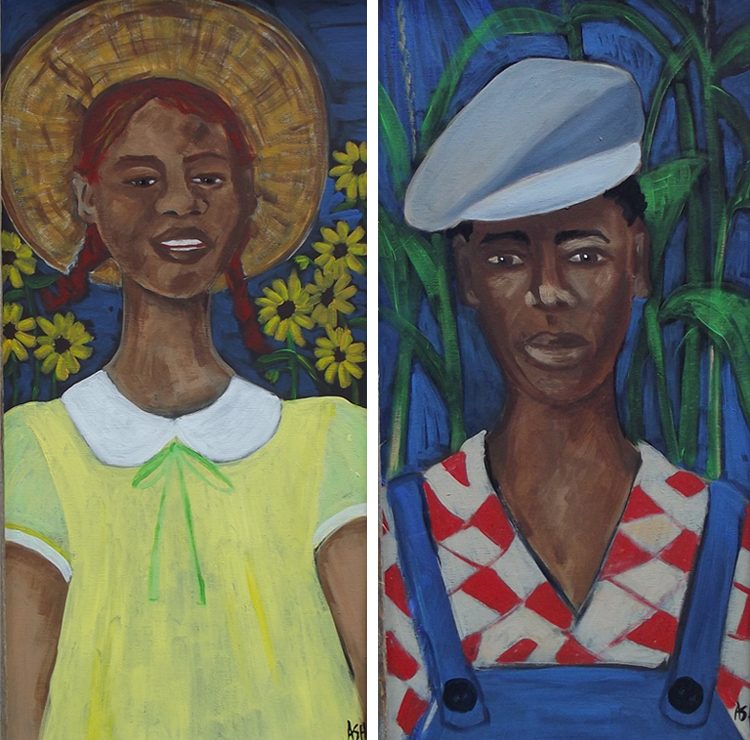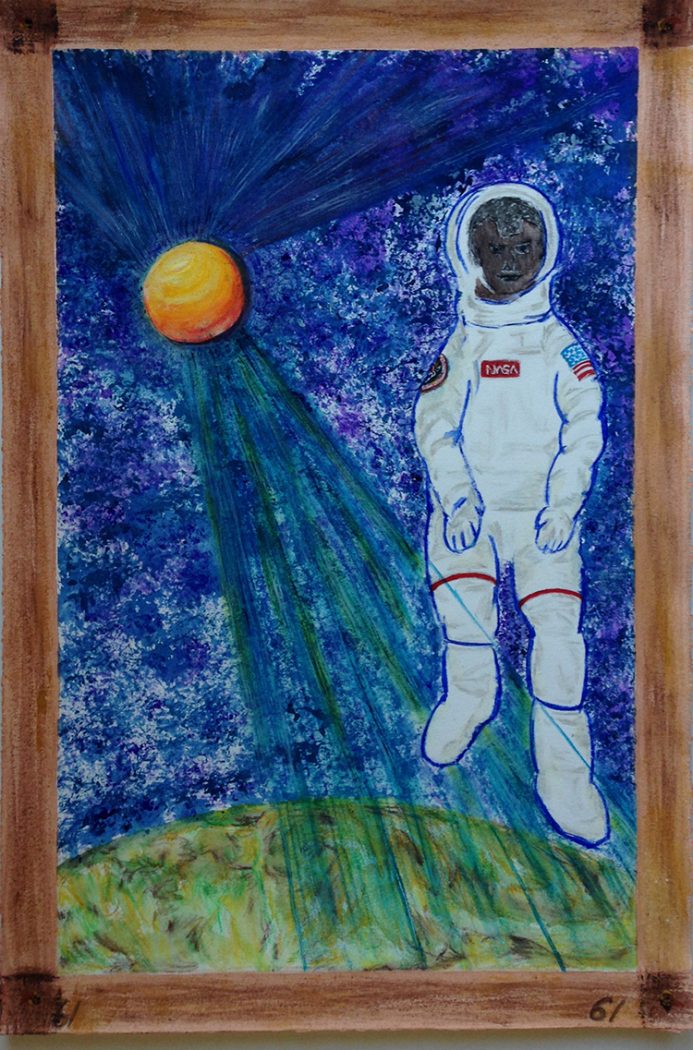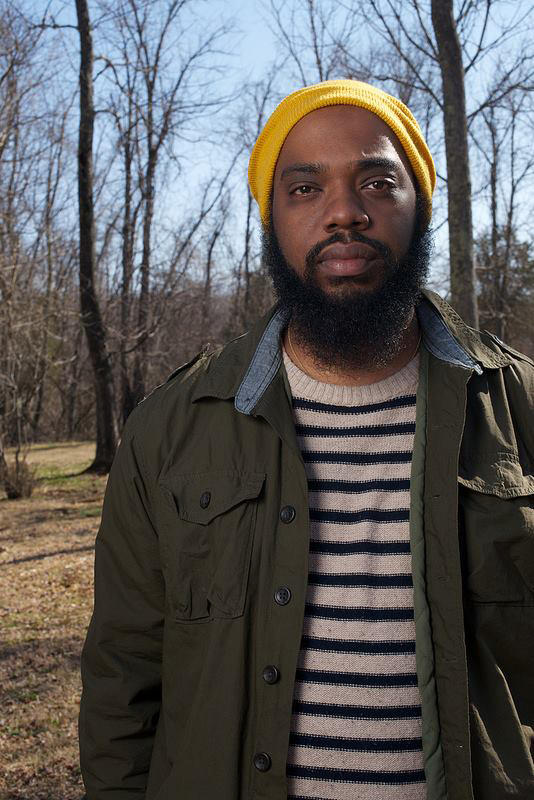In the final, 60th panel of The Migration Series, Jacob Lawrence leaves us with the words “And the migrants keep coming.” The story of migration is ongoing; what would the 61st panel look like today? Featured below are some thoughtful responses to this question by local artists. Submit your #Panel61 on our recently launched Jacob Lawrence website.
Judy Williams
“My artistic production is my attempt to pay homage to the vast distribution of humanity seeking asylum and refuge from the abominations of war. Across the world a multitude of disparate peoples individuated by each one’s personal story are on the move, migrating, yearning to alter their path of destiny, creating a new geography. My daily practice of painting further attempts to represent those who now flee their homes in pursuit of new places of hope, peace, and love.”
Antionette Simmons Hodges
“Surely, Lawrence would continue with themes related to social issues of life in the cities. To follow his themes of the conditions in the cities, I painted The Protesters, using Lawrence’s simple color palette and stylized figures. The painting is of a demonstration for human rights, which could have taken place in the sixties for racial equality, or today showing unity for a common cause pertaining to immigration or protesting the many shootings of unarmed African Americans.”
Antionette Simmons Hodges
“This could be any southern African American couple from the past, much like my parents. I never thought of my folks as part of the Great Migration, but they were! Wiley and Annie wanted to start a new life together, free from the limits of segregation. Mom and Dad came from large families, grew up farming the land in Wetumpka, Alabama. They decided in 1940, before I was born, to leave Alabama’s cotton fields, as did many of my aunts and uncles. My parents settled in Buffalo, NY, while other family members’ destinations became Cleveland and Detroit. All were looking for a better way of life for their families, which they found working in the steel mills and car factories.”
Melissa Lowry Mosley
“In keeping with Lawrence’s migration theme of internal personal shift and external societal movement, my artwork commemorates the first African American NASA astronaut (Guion “Guy” Bluford, August 30, 1983) in space, and therein remembers the thirteen African American men and women who would follow him into space—two of whom were killed in space shuttle disasters (including the second African American man in space), the two who would retire having never flown in space, the very first named African American Astronaut trainee who would die in an aircraft accident, and those waiting still! The watercolor bears the caption: Continuing to move North: True North. No boundaries. Slipping our surly bonds of ‘space’ and claiming our place among the stars.”






